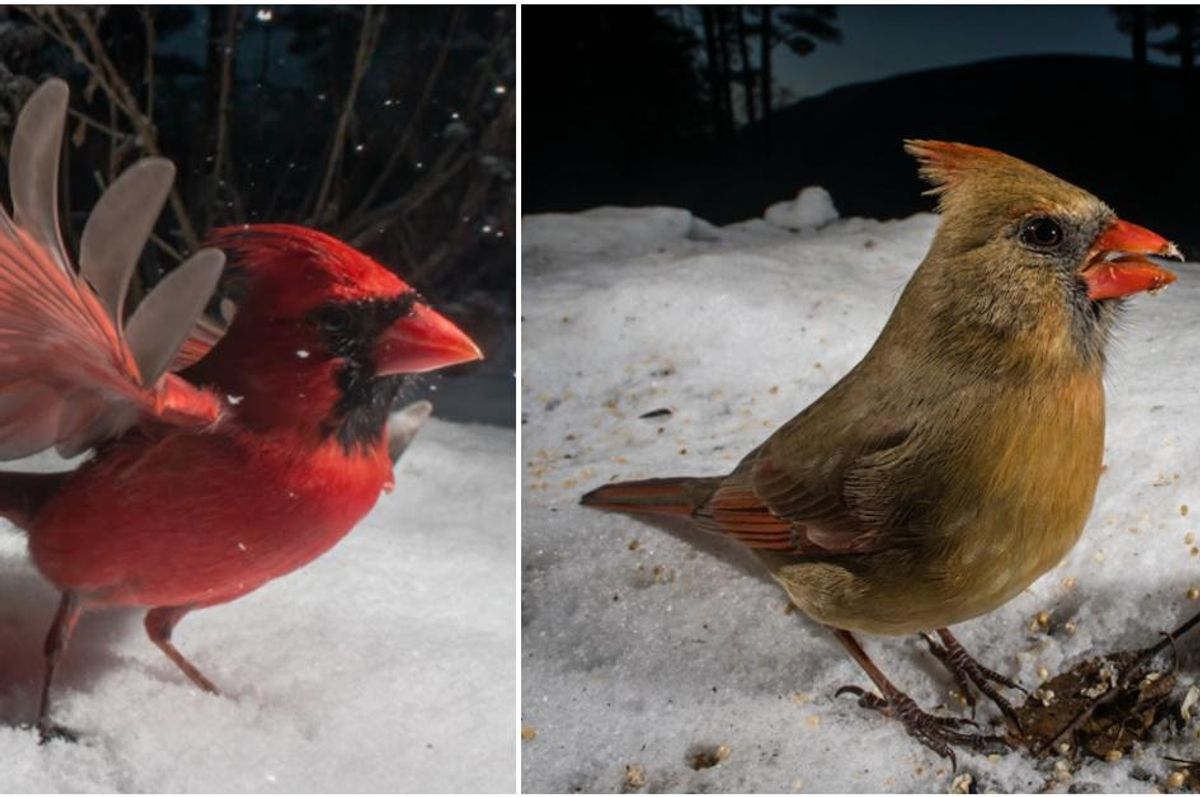
The pandemic has caused many people to reevaluate their surroundings. When you’re stuck at home more often than you’d like, you start to pay a lot more attention to what goes on in your own backyard.
This type of introspection inspired wildlife photographer Carla Rhodes to get a closer look at the furry friends that live near her home in the Catskill mountains of New York.
What she found was magical.
“The winter of 2020-2021 was particularly brutal to humankind. After months of enduring the Covid-19 pandemic, we were now collectively slogging through winter. As a result of being stuck at home, I focused on my immediate surroundings like never before,” Rhodes said in a statement.
Rhodes positioned a DSLR camera trap beneath her bird feeder to get an up-close glimpse of the wildlife that came to sample her delicious seeds. The results are an incredible series of photos of birds and other woodland creatures from a vantage point most people never see. Rhodes calls her project, “Beneath the Bird Feeder.”
The birdfeeder photos also gave a new glimpse into the behavior of several species of birds and rodents that call the Catskills home.
“As I got deeper into the project, intriguing observations emerged,” Rhodes says. “I noticed distinct repeat visitors such as a Dark-Eyed Junco with an overgrown beak, a deer mouse with a notched ear, and an irruption of Red-Breasted Nuthatches. Dark-Eyed Juncos always showed up at the crack of dawn and Northern Cardinals would always be the last visitor of the day as dusk turned into evening.”
Here are 15 of the most captivating photos that Rhodes captured from beneath her bird feeder.
1. Dark-eyed junco

“Often overlooked and considered drab ground-feeding birds, Dark-Eyed Juncos hold a special place in my heart due to their funny and curious behaviors. Every day they were first to arrive beneath the bird feeder,” Rhodes says. “Dark-Eyed Juncos were one of the most frequent and curious subjects beneath the bird feeder.”
2. Dark-eyed junco

3. Dark-eyed junco

4. Tufted titmouse

According to All About Birds, the tufted titmouse is “common in eastern deciduous forests and a frequent visitor to feeders.”
5. Mourning dove

”Observing Mourning Doves was a daily pleasure, especially when they gathered to form a clean-up crew beneath the bird feeder. Mourning doves are monogamous and possibly mate for life,” Rhodes writes.
6. Mourning dove

7. Mourning doves

8. Blue jay

“Blue Jays are known for their intelligence and complex social systems with tight family bonds,” All About Birds says. “Their fondness for acorns is credited with helping spread oak trees after the last glacial period.”
9. Northern cardinal

“Northern Cardinals were always the last to show up beneath the bird feeder, shortly after dusk every evening,” Rhodes writes.
10. Black-capped chickadee

“Little flocks of Black-capped Chickadees enliven the winter woods with their active behavior and their cheery-sounding chick-a-dee callnotes as they fly from tree to tree, often accompanied by an assortment of nuthatches, creepers, kinglets, and other birds,” the Audubon field guide to North American birds says.
11. Black-capped chickadee

12. Eastern gray squirrel

Eastern gray squirrels are important members of forest ecosystems as they play a vital role in dispersing seeds.
13. American red squirrel

The American red squirrel is known for its distinct bushy and dark red tail with hints of a white outline.
14. American red squirrel

15. Northern short-tailed shrew

If you see a northern short-tailed shrew, be careful. It’s venomous and paralyzes its victims with poisonous saliva. In humans, a bite can cause swelling and intense pain.
This article originally appeared on 01.03.22























